The ever-rising costs of graphics cards have halted many consumers from building their computers. With lower incentives, customers are forced to either stick to their current builds or use a cheap GPU to fulfill their basic needs. However, there’s nothing to worry about as today’s article focuses on the best graphics card under $300 that delivers amazing performance for its price. With the accessibility to utilize technologies such as raytracing and DLSS, let’s get right into it!
Here’s a quick overview of all the best $300 graphics cards compared with each other:








- Why you can trust Tech4Gamers: We understand the importance of making informed decisions. That’s why our team spends significant time testing every product we review. Find out more about how we test.
If you have a higher budget, you should also check our article on the best graphics card under $500.
Best Graphics Card Under $300
Here’s a list of the Best Graphics Card Under $300 I have handpicked:
- ASUS Dual GeForce RTX 4060 OC Edition
- XFX Speedster QICK308 Radeon RX 7600
- Intel Limited Edition Arc A750
- ZOTAC Gaming GeForce RTX 3060 Ti Twin Edge OC
ASUS Dual GeForce RTX 4060 OC Edition
Best NVIDIA Graphics Card Under $300
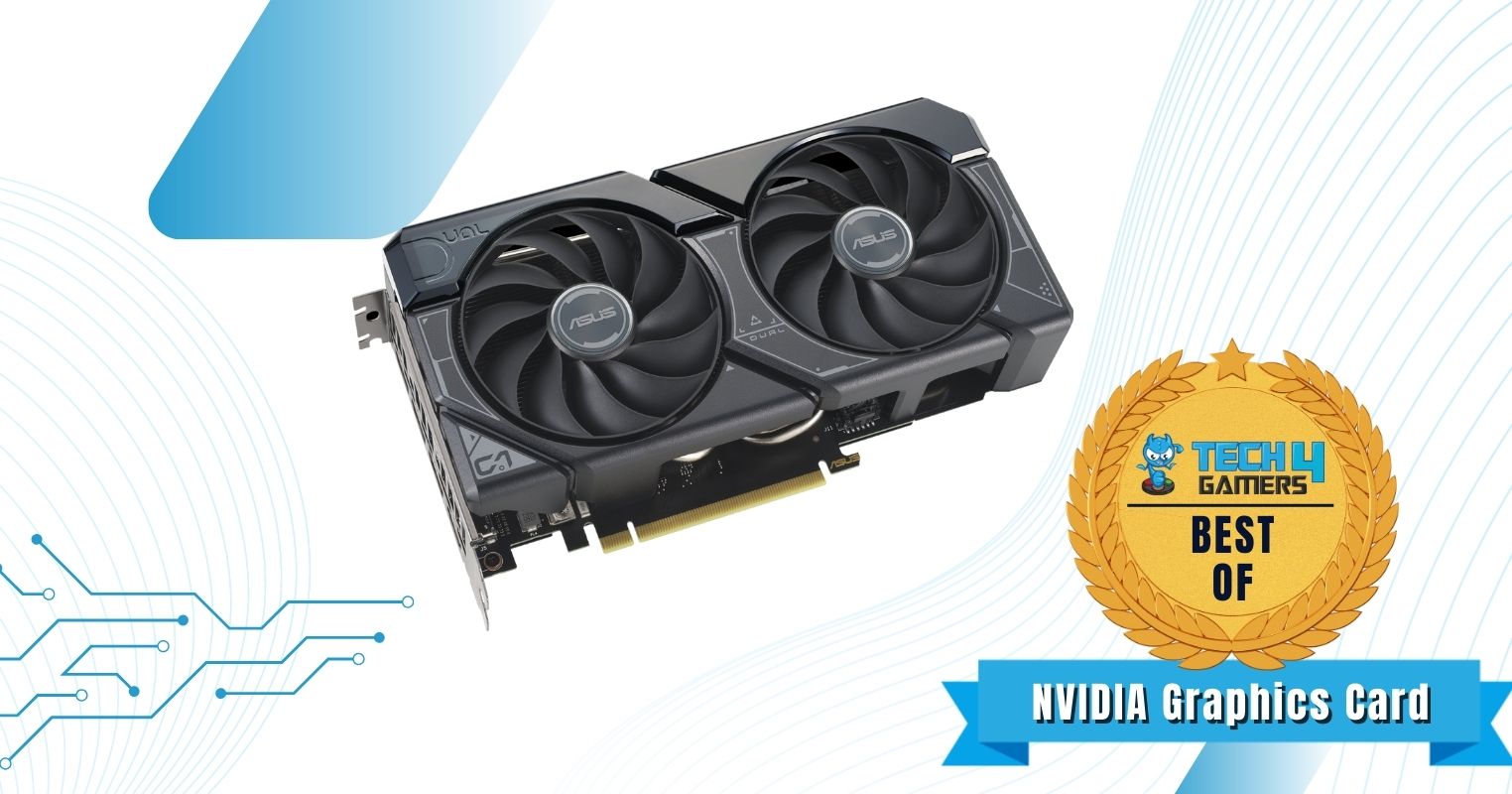
Specifications: Architecture: Ada Lovelace | Dimensions: 227.2 x 123.2 x 49.6mm | CUDA Cores: 3,072 | Base Clock: 2,505MHz (Boost Default) | Boost Clock: 2,535MHz (Overclocked) | Memory: 8GB GDDR6 | Recommended PSU: 550W | Power Connectors: 1 x 8-pin | RGB: No
Pros
- Great cooling performance
- Compact size
- Amazing performance-per-dollar ratio
Cons
- No RGB
Design: Aside from being a budget-friendly graphics card, the ASUS Dual GeForce RTX 4060 OC Edition is a compact GPU compared to the other models. With a size of 227.2 x 123.2 x 49.6mm, the ASUS RTX 4060 is a 2.5-slot card, fitting in most ATX cases. Because the GPU offers zero RGB lighting and has plain colors, it’s perfect for a stealthy build. You can even install the ASUS Dual GeForce RTX 4060 OC Edition in workstation PCs without worrying about aesthetics or work dynamics.
Cooling: Looking through the cooling of the ASUS Dual GeForce RTX 4060 OC Edition, the GPU has two Axial tech fans and a copper baseplate with three heat pipes, which cover the majority of the thickness of the card. Most of the heat is dissipated through the heat pipes lowering the temperatures significantly. Through the stock settings, the fans stay at 0 RPM until the temperatures exceed 50°C. Because of the feature, the card has amazing acoustic levels and is astoundingly quiet even during greater work operations.
Performance: Regarding performance, the ASUS Dual GeForce RTX 4060 OC Edition has a higher base clock speed than the reference model. To compare, the reference model has a base clock speed of 1,860MHz. In contrast, the ASUS RTX 4060 OC has a base clock speed of 2,505MHz. The boost clocks of both GPUs are similar at 2,535MHz. Moreover, the ASUS RTX 4060 has amazing overclocking potential due to better cooling and VRMs. If you’re trying to overclock your graphics card, the ASUS Dual GeForce RTX 4060 OC Edition will be a great addition to your overclocking journey.
Buy It If
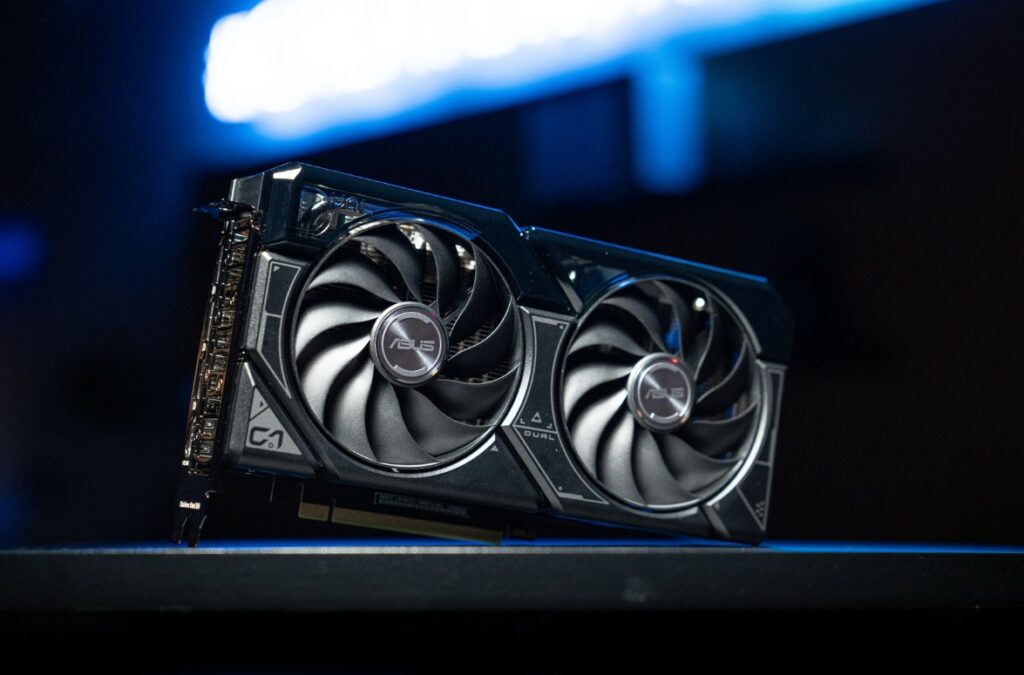
You want to overclock: One of the most impressive things about the ASUS Dual RTX 4060 OC Edition is its power efficiency. This allows users to overclock it more than most other variants while staying within a budget.
You want crisp 1440P gaming: There aren’t a lot of NVIDIA GPUs that can provide crisp 1440P gaming within a $300 budget. Moreover, with the ASUS Dual RTX 4060 OC Edition, you can go to entry-level 4K gaming with reduced graphic quality.
Don’t Buy It If
You want RGB: If you’re looking for RGB, the ASUS Dual RTX 4060 OC Edition is not meant for you.
What Makes It The Best NVIDIA Graphics Card Under $300
Looking at the current pricing for NVIDIA GPUs, the only other graphics card under $300 is the NVIDIA GeForce RTX 3060. Regarding pricing and performance, the RTX 4060 beats it considerably, making it the best NVIDIA GPU under $300. Furthermore, you can overclock the ASUS Dual RTX 4060 OC Edition more than most variants while keeping lower temperatures.
More about RTX 4060:
| Performance: 8/10 | Value: 9/10 |
| Features: 10/10 | Design: 7/10 |
XFX Speedster Qick308 Radeon RX 7600
Best AMD Graphics Card Under $300
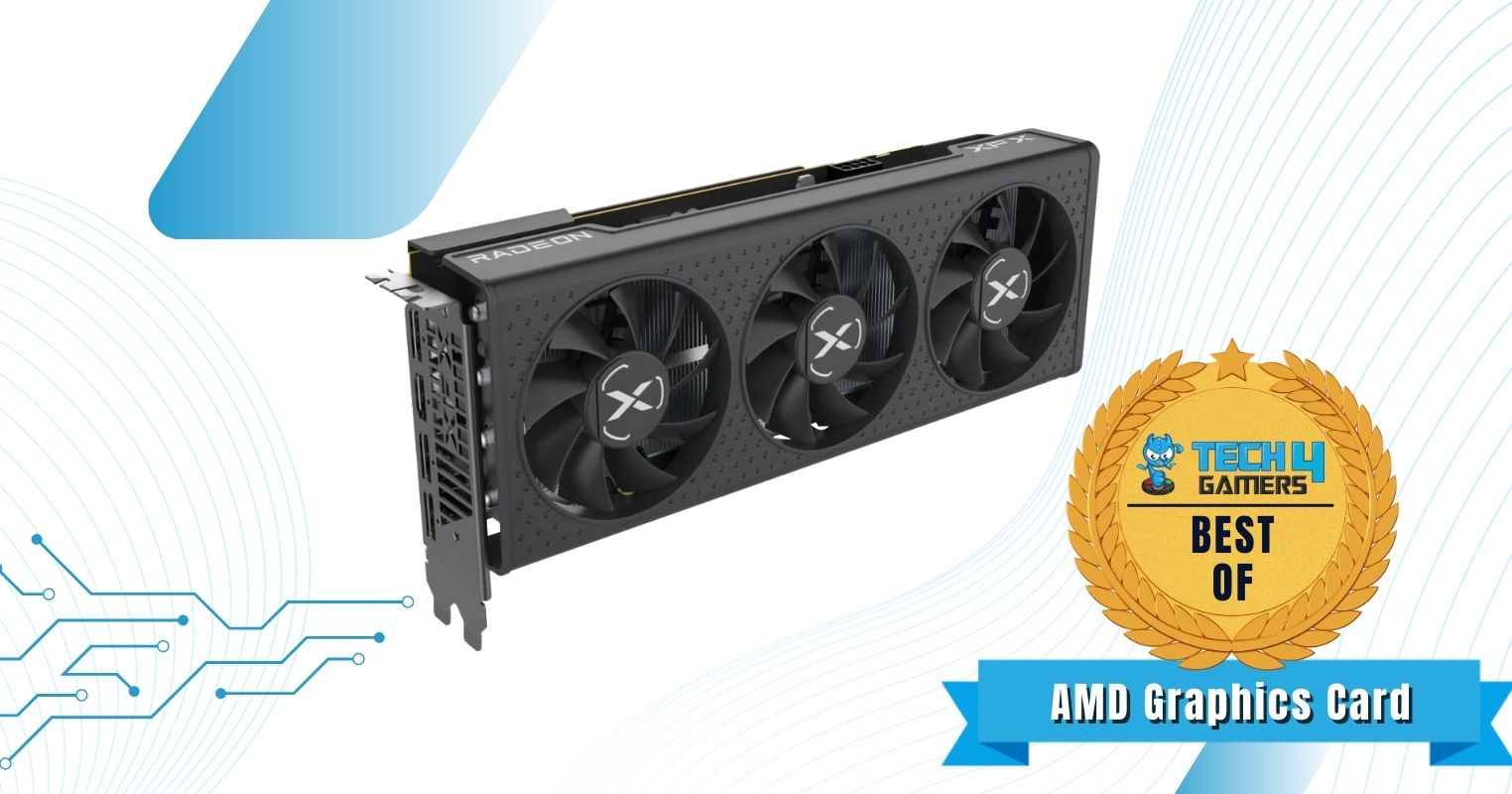
Specifications: Architecture: RDNA 3.0 | Dimensions: 274 x 114 x 50mm | Stream Processors: 2,048 | Base Clock: 1,875MHz | Boost Clock: 2,755MHz | Memory: 8GB GDDR6 | Recommended PSU: 550W | Power Connectors: 1 x 8-pin | RGB: No
Pros
- Great boost clock performance
- Amazing 1080P performance
- Great cooling capabilities
Cons
- No RGB
- Limited overclocking performance
Design: One of the longest GPU variants for the AMD Radeon RX 7600, the XFX Speedster has dimensions of 274 x 114 x 50mm. However, the dimensions aren’t for show, as the GPU has a triple-fan design, improving airflow and temperatures. Moreover, the graphics card is a 2.5-slot card, making it a good match for most ATX cases. Because the XFX Speedster Qick308 Radeon RX 7600 doesn’t have any RGB, it’s fit for a stealth build. While I tested the GPU, it looked amazing, even without any RGB, due to its intricate design.
Cooling: With three fans and four 6mm nickel-plated copper heat pipes, the XFX Speedster Qick308 Raden RX 7600 has amazing cooling capabilities. Moreover, the fans produce almost zero noise, so you don’t need to worry about acoustic levels increasing at higher fan speeds. Furthermore, the aluminum heatsink provides a better solution to absorb heat which is then released by the fans. All-in-all, the GPU has amazing temperatures, and you can overclock it too.
Performance: When looking at the performance of the XFX Speedster Qick308 Radeon RX 7600, the variant has a 9% faster base clock speed than the reference model. To explain, the reference card has a base clock of 1,720MHz, whereas the Qick308 variant has a base clock speed of 1,875MHz. Additionally, the Qick308 can be overclocked to an extent; however, I couldn’t push the card by a lot. Therefore, if you want to overclock your GPU, the RX 7600 might not be the best option. Otherwise, it’s an amazing GPU for 1440P 60FPS and 1080P 144FPS gaming.
Buy It If
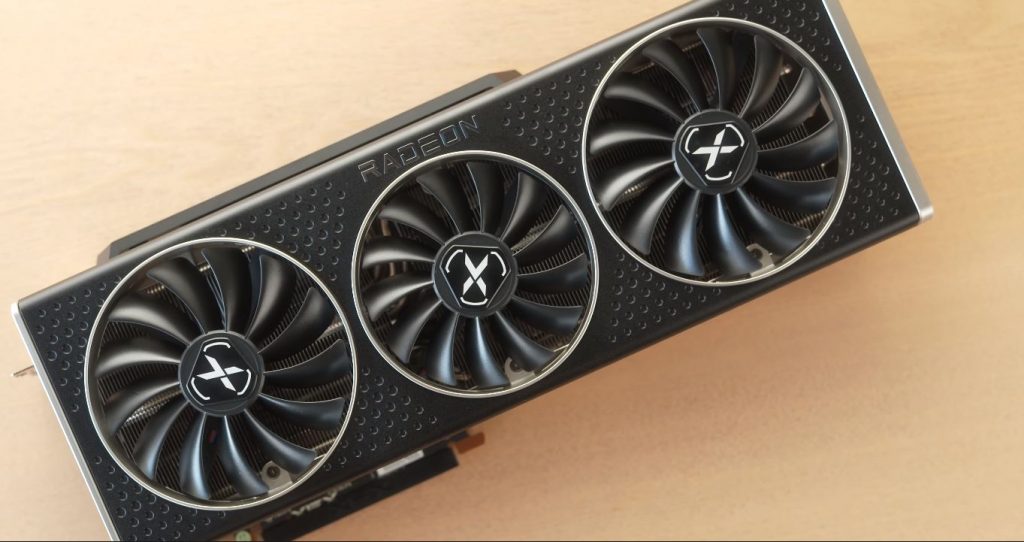
You want zero fan noise: An amazing quality about the XFX Speedster Qick308 AMD Radeon RX 7600 is its almost zero fan noise even at 100% usage, making it one of the quietest GPUs I have tested.
High-end 1080P gaming: If you use a 144Hz 1080P monitor or a 60Hz 1440P monitor, the AMD Radeon RX 7600 is your GPU. In most titles I tested, the XFX Speedster Qick308 AMD Radeon RX 7600 produced over 144FPS at 1080P, making it AMD’s best offering at the price point.
Great temperatures without water cooling: The triple fan design allows the XFX Speedster Qick308 RX 7600 to stay cool even without water cooling. If you properly utilize your case fans, you should have no problems maintaining temperatures, even while overclocking.
Don’t Buy It If
You want RGB: If you’re looking for performance and RGB, the XFX Speedster Qick308 RX 7600 will not satisfy your needs. The card is great for its basic aesthetics but provides no RGB capabilities.
What Makes It The Best AMD Graphics Card Under $300
Aside from its non-RGB, the XFX Speedster Qick308 AMD Radeon RX 7600 offers amazing 1080P and 1440P performance while costing less than $300. Moreover, the power utilization isn’t bad, and you can easily overclock the GPU to fine-tune it as you wish, ultimately making it the best AMD graphics card under $300.
More about RX 7600:
| Performance: 9/10 | Value: 9/10 |
| Features: 8/10 | Design: 8/10 |
Intel Limited Edition Arc A750
Best Intel Graphics Card Under $300
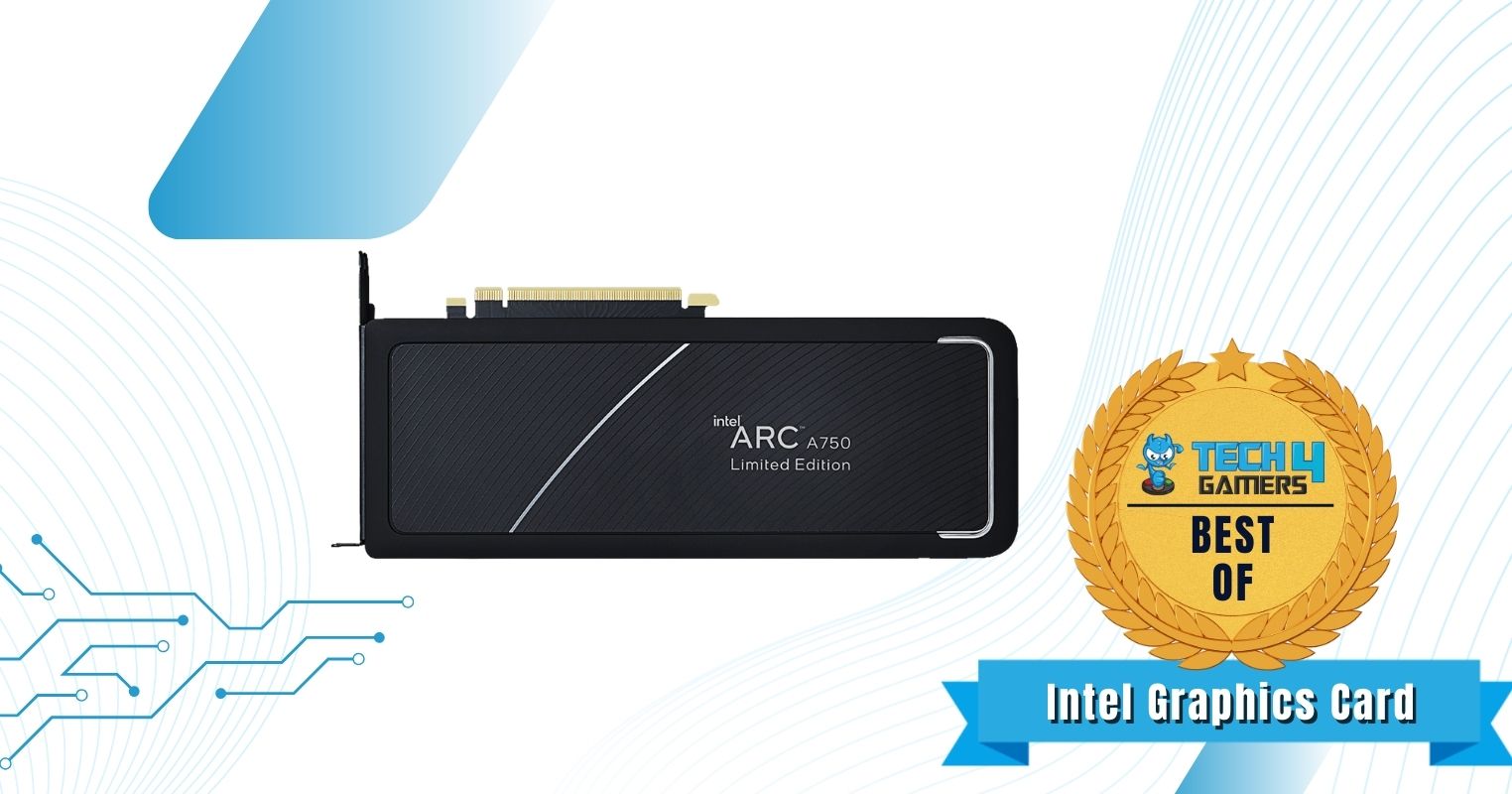
Specifications: Architecture: Generation 12.7 | Dimensions: 268 x 98 x 41mm | CUDA Cores: 3,584 | Base Clock: 2,050MHz | Boost Clock: 2,400MHz | Memory: 8GB GDDR6 | Recommended PSU: 550W | Power Connectors: 1 x 6-pin + 1 x 8-pin | RGB: No
Pros
- Exceptional raytracing capabilities
- Outstanding 1080P performance
- Attractive build quality
Cons
- Simple block design
- Not power efficient
Design: Because we’re discussing the Intel Arc A750 Limited Edition GPU, the design isn’t over-the-top and features a simple aesthetic. With a size of 268 x 98 x 41mm, the Arc A750 is a double slot and double fan GPU that can easily fit in most ATX cases. Although the GPU doesn’t feature any RGB, it has a great block-type aesthetic, and you can place it in a sleeper build.
Cooling: Unlike its design, the temperatures I achieved while testing the Intel Arc A750 Limited Edition GPU were subpar. While it consumes almost as much power as the NVIDIA GeForce RTX 3060 GPU, the Arc A750 has significantly higher temperatures. The Intel Arc A750 Limited Edition features an aluminum heatsink over a series of heat pipes. Moreover, the GPU seems to have a vapor chamber rather than ordinary heat pipes. Even so, the temperatures could be improved significantly.
Performance: Moving towards the performance, the Intel Arc A750 Limited Edition GPU has a base clock speed of 2,050MHz and a boost clock speed of 2,400MHz. On paper, these clock speeds are extremely fast. However, through practical performance, the GPU is around the level of an RTX 3060. Besides that, the Intel Arc A750 has exceptional raytracing and AI super sampling (XeSS). To explain, even though Intel is on its first generation with the technology, it competes head-to-head with AMD and NVIDIA. All-in-all, if you’re looking for a great 1080P GPU, the Intel Arc A750 is a great choice.
Make Sure To Read: How to Check Used Graphics Card Before Buying?
Buy It If
You want to experience entry-level raytracing: Staying within the $300 budget, the Intel Arc A750 shows an amazing raytracing experience. Moreover, you can also utilize Intel’s XeSS technology to experience incredible AI image upscaling, increasing FPS by up to 70%.
You’re using a 1080P monitor: The Intel Arc A750 is likely the best graphics card for 1080P monitors. Using XeSS, you can get up to 144 FPS in most games, and the frame times are relatively low too.
Don’t Buy It If
You want power efficiency: The Intel Arc A750 isn’t a good option if you’re looking for a power-efficient GPU. During my testing, the GPU showcased 91W while idling. However, the power consumption is similar to an RTX 3060 GPU at max load.
What Makes It The Best Intel Graphics Card Under $300?
The Intel Arc A750 provides exceptional 1080P performance while utilizing raytracing and AI image upscaling technology. Rivaling its competitors in performance, accessibility, and features, the Intel Arc A750 is undoubtedly the best Intel graphics card under $300.
| Performance: 9/10 | Value: 8/10 |
| Features: 10/10 | Design: 8/10 |
ZOTAC Gaming GeForce RTX 3060 Ti Twin Edge OC
Best Used Graphics Card Under $300
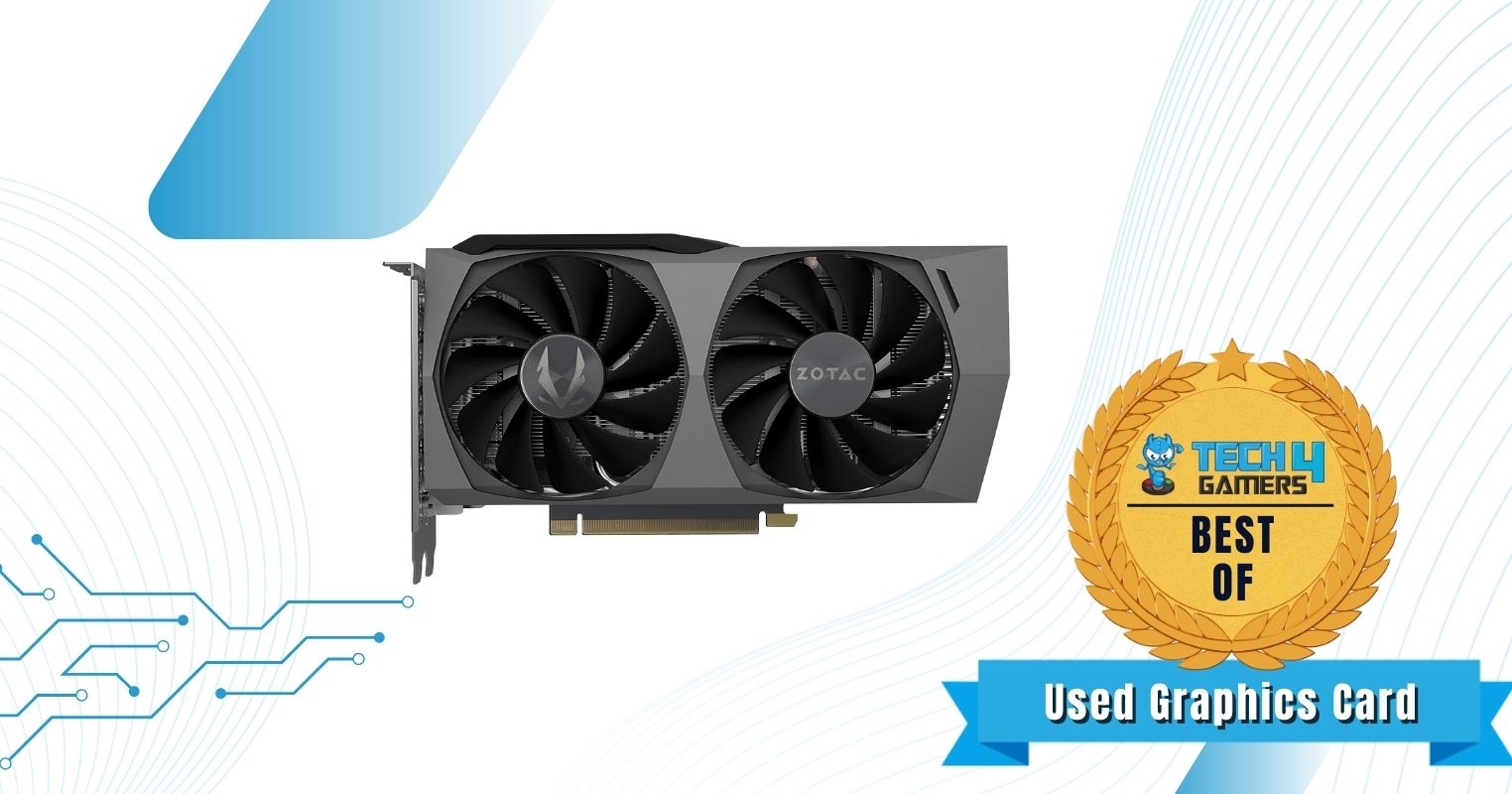
Specifications: Architecture: Ampere | Dimensions: 222.1 x 115.6 x 38.2mm | CUDA Cores: 4,864 | Base Clock: 1,410MHz | Boost Clock: 1,695MHz | Memory: 8GB GDDR6 | Recommended PSU: 650W | Power Connectors: 1 x 8-pin | RGB: No
Pros
- Compact build
- Great overclocking capabilities
- Attractive design
Cons
- Small cooler
- Loud fans
Design: Unlike the other graphics cards in this review, the ZOTAC Gaming GeForce RTX 3060 Ti Twin Edge OC offers a compact build. With dimensions of 222.1 x 115.6 x 38.2mm, it is a dual-slot GPU and boasts dual fans. While the GPU doesn’t offer RGB, the ZOTAC logo has white illumination, which fits most builds. Due to the graphics card’s size, you can fit it in any ATX or even most mITX cases. Moreover, the GPU has an attractive design that fits well with classy build themes.
Cooling: Although many smaller graphics cards have great cooling capabilities, the ZOTAC RTX 3060 Ti is somewhat lackluster in this department. Even though the GPU has a wide fin-stack array heatsink coupled with copper heat pipes, the GPU gave me an average temperature of 67°C throughout my testing. Additionally, even through the zero RPM fan mode, the fans become significantly louder when the GPU hits higher loads. These negative points do not hinder the performance of the ZOTAC RTX 3060 Ti, as the GPU can still overclock magnificently.
Performance: While the Zotac RTX 3060 Ti has the same base clock of 1,410MHz as the reference card, it has a 2% faster boost clock at 1,695MHz. The factory overclock does not increase the power outage, meaning consumers can easily further overclock the GPU without any problems. Thanks to the overclocking capabilities, the Zotac RTX 3060 Ti is on par with the AMD Radeon RX 7600 and performs slightly better than the NVIDIA GeForce RTX 4060 GPU. All-in-all, within the $300 budget, the used RTX 3060 Ti GPU has the best performance with amazing overclocking potential.
If you want to check out other processors the RTX 3060 Ti is an amazing graphics card for, please read through the following articles:
- Best Graphics Card For i5 13600K
- Best Graphics Card For Ryzen 7 7800X3D
- Best Graphics Card For 1080p
- Best Gaming PC Under $2000
Buy It If
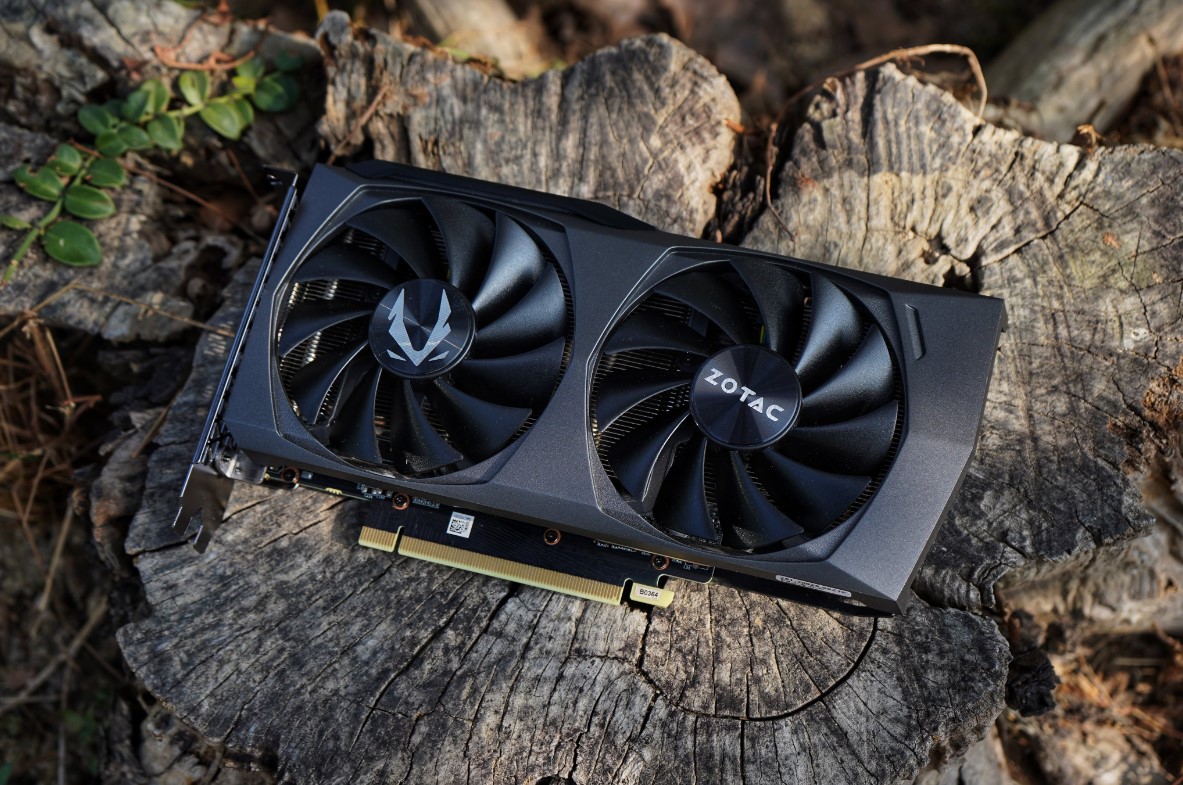
You have a 120Hz 1440P monitor: The ZOTAC GeForce RTX 3060 Ti Twin Edge OC GPU is meant for 1440P gaming at higher frame rates. The extra FPS will be wasted if your monitor can’t afford 1440P 120 FPS.
You want to overclock: If you want to test the limits of a graphics card through overclocking, the ZOTAC GeForce RTX 3060 Ti Twin Edge OC GPU is worth the purchase. You can easily overclock it without fear of burning anything due to its overclockable nature.
Don’t Buy It If
Noise is a problem: The ZOTAC GeForce RTX 3060 Ti Twin Edge OC GPU is extremely loud at full load. If fan noise is a problem for you, I suggest you stay away from the variant.
What Makes It The Best Used Graphics Card Under $300?
The performance per dollar ratio and overclocking capabilities make the ZOTAC GeForce RTX 3060 Ti Twin Edge OC the best used graphics card under $300. Moreover, the GPU design only adds to it.
| Performance: 10/10 | Value: 8/10 |
| Features: 8/10 | Design: 9/10 |
Gaming Benchmarks Of The Best Graphics Cards Under $300
Here are the gaming benchmarks of the best graphics cards under $300 to help you put into perspective the performance factor of my selection:
Important GPU Key Terms
- CUDA Cores: CUDA cores are parallel processing units found in GPUs, allowing developers to harness GPUs’ power for general-purpose computing tasks.
- Raytracing: Raytracing is a graphics rendering technique that traces light paths to make the lighting as realistic as possible. Raytracing requires RT cores.
- Tensor Cores: Tensor cores are specifically found in NVIDIA GPUs, which accelerate deep learning workloads.
- VRAM: Also known as Video Random Access Memory, VRAM is only available for GPUs, which helps access shaders, renders and other graphical elements quickly.
- Overclocking: Overclocking is a technique that allows users to increase the clock speeds of their CPU, GPU and RAM by playing with the power and voltage limits of the products.
- DLSS: Short for Deep Learning Super Sampling, it is an AI image upscaling technique NVIDIA uses to improve gaming performance. DLSS is often enabled alongside raytracing to reduce performance loss.
- GDDR6: It is a memory type mainly used by high-end GPUs and offers a bandwidth speed of 14 to 16 Gbps.
How We Selected These Graphics Cards
Before purchasing a graphics card, you must consider a variety of things. To make your purchase easier, here are the parameters I considered while selecting the best graphics cards under $300.
Performance
The most important aspect to consider when purchasing a GPU is to know the performance you can gain through the upgrade. Therefore, you must analyze multiple comparisons and benchmarks and check the power utilization, performance per dollar ratio, and temperatures before finalizing which GPU is better.
All the GPUs I chose provide amazing performance under different circumstances. While many are great at 1080P 60 FPS gaming, others are great at 1440P 120 FPS gaming.
Cooling Capabilities
Another important aspect to know before purchasing a graphics card is how much cooling it requires. Many graphics cards are fine with moderate air cooling, while others require water cooling for adequate temperatures.
Most GPUs in the review have decent cooling, while others may require slightly more due to a higher power outage.
Wattage Requirements
Knowing the wattage requirement of a graphics card can save you from potential hazards. Not providing enough power to a GPU can make it lose performance or even blast on rare occasions. Therefore, before purchasing, ensure your PC has an adequate power supply.
All the GPUs I chose require 500 to 650W of power at most. Therefore, if you have an adequate PSU, you can easily upgrade without worrying about the power draw.
Aesthetics
While not important for performance, a graphics card’s aesthetics can highly elevate a PC’s overall aesthetics. Many GPUs provide this aesthetic through RGB, while others provide it through classy or minimalistic designs.
Throughout my testing, I kept in mind the easiest-to-blend aesthetic for all types of builds. To do so, none of the GPUs in the review offer RGB but have unique and amazing build designs.
Frequently Asked Questions
Yes. There are many graphics cards under $300 that provide incredible performance at 1080P and even 1440P resolutions.
Yes. The NVIDIA GeForce RTX 3050 can provide adequate performance at 1080P resolution in medium to high settings.
Although the RTX 3050 is more recent, the RTX 2060 offers better performance due to its specifications.
Yes. Multiple graphics cards, such as the NVIDIA GeForce RTX 4060 and the AMD Radeon RX 7600, can provide amazing raytracing performance.
Thank you! Please share your positive feedback. 🔋
How could we improve this post? Please Help us. 😔
[Hardware Expert]
With a major in Computer Science, Sameed is a tech enthusiast who puts his passion for gadgets into words and creates informative blogs. From comparing different hardware to reviewing the best RAMs, motherboards, and graphics cards for your next build, Sameed has covered a wide spectrum of topics that have given him a special insight into every nook and cranny of the tech world. Sameed is also a certified expert at Computer Hardware & Networking.
Get In Touch: sameed@tech4gamers.com


 Threads
Threads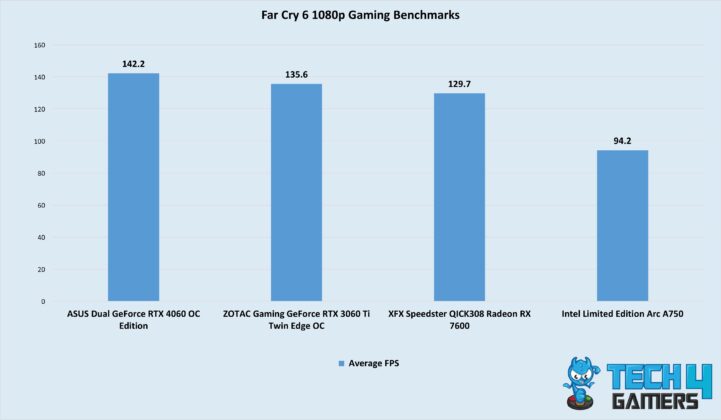
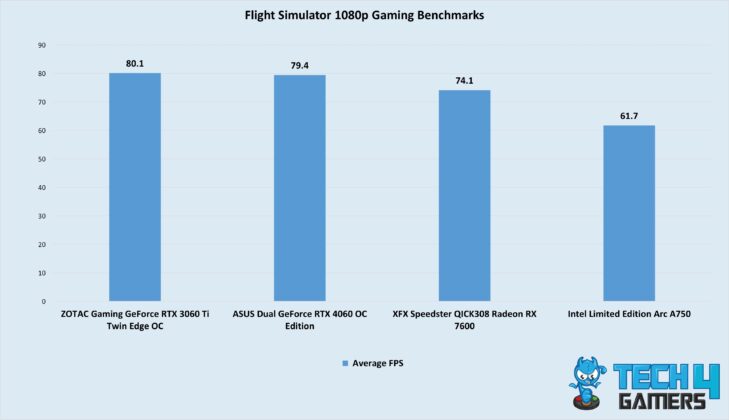
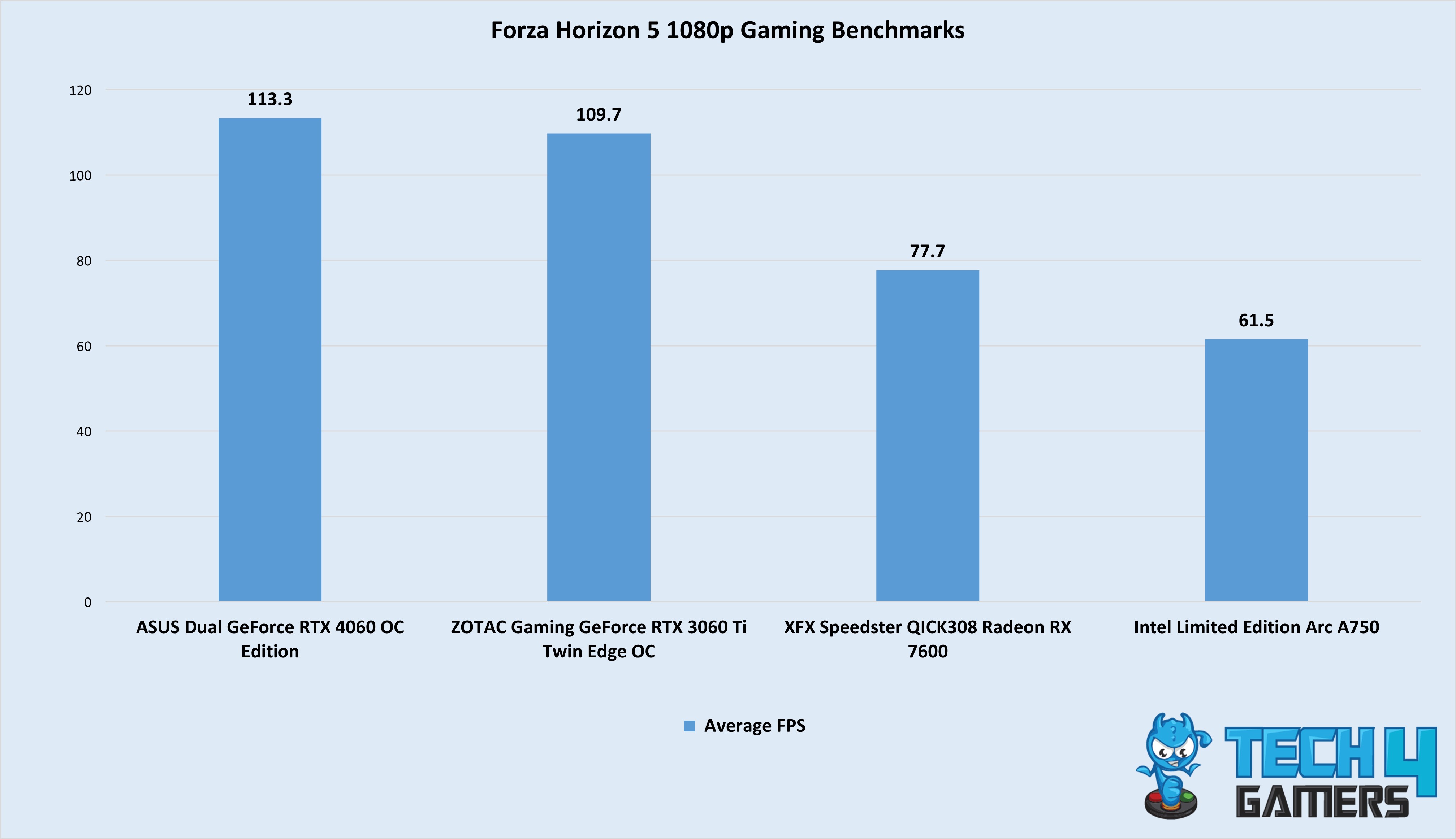
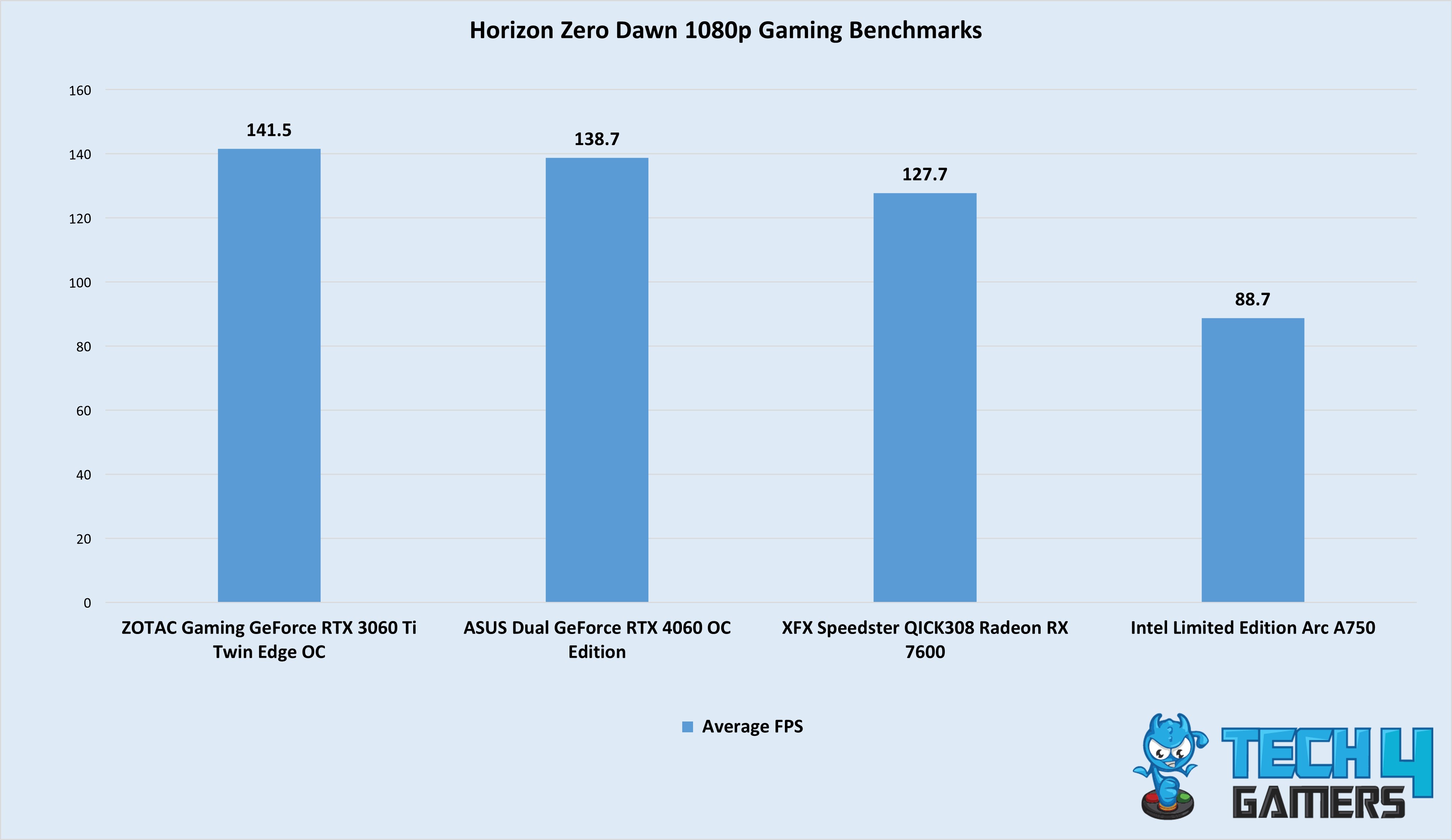
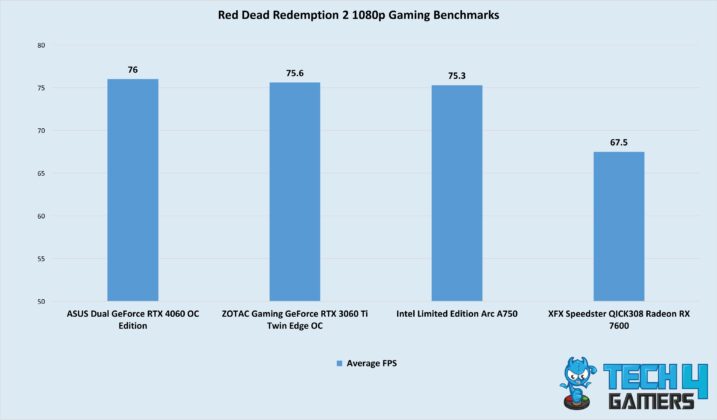
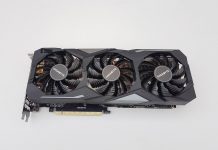
![Tried & Tested: BEST RX 7800 XT Graphics Cards [Including Benchmarks] Best RX 7800 XT Graphics Cards](https://tech4gamers.com/wp-content/uploads/2023/09/Best-RX-7800-XT-Graphics-Cards-218x150.jpg)
![6 BEST GPU For Core i9-14900K [Top Performance] Best GPU For i9-14900K](https://tech4gamers.com/wp-content/uploads/2023/10/Best-GPU-For-i9-14900K-218x150.jpg)
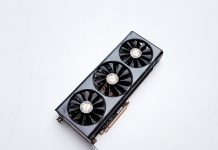
![5 BEST Budget Graphics Cards [Compared With Benchmarks] Best Budget Graphics Cards](https://tech4gamers.com/wp-content/uploads/2023/09/Best-Budget-Graphics-Cards-218x150.jpg)